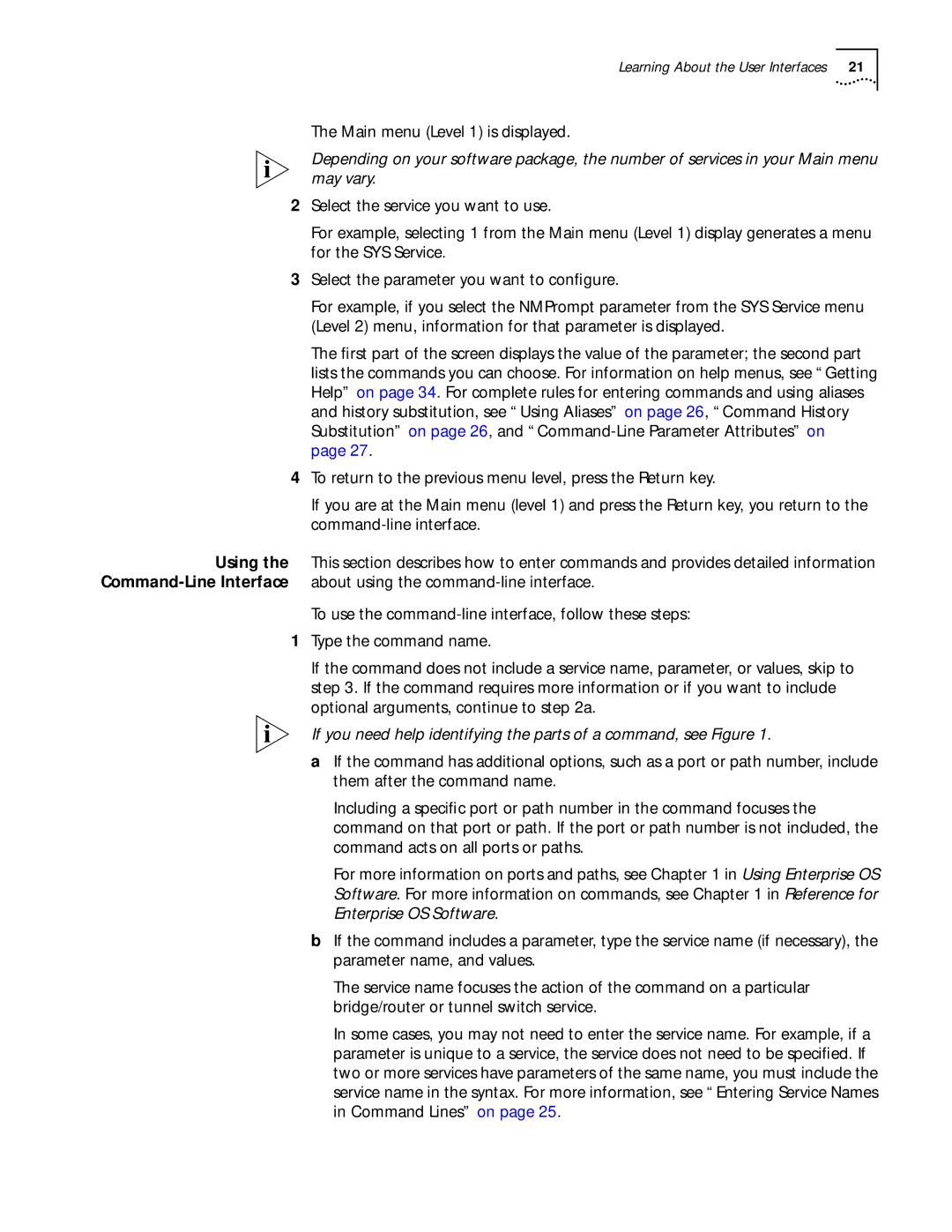
Learning About the User Interfaces | 21 |
The Main menu (Level 1) is displayed.
Depending on your software package, the number of services in your Main menu may vary.
2Select the service you want to use.
For example, selecting 1 from the Main menu (Level 1) display generates a menu for the SYS Service.
3Select the parameter you want to configure.
For example, if you select the NMPrompt parameter from the SYS Service menu (Level 2) menu, information for that parameter is displayed.
The first part of the screen displays the value of the parameter; the second part lists the commands you can choose. For information on help menus, see “Getting Help” on page 34. For complete rules for entering commands and using aliases and history substitution, see “Using Aliases” on page 26, “Command History Substitution” on page 26, and
4To return to the previous menu level, press the Return key.
If you are at the Main menu (level 1) and press the Return key, you return to the
Using the This section describes how to enter commands and provides detailed information
To use the
1Type the command name.
If the command does not include a service name, parameter, or values, skip to step 3. If the command requires more information or if you want to include optional arguments, continue to step 2a.
If you need help identifying the parts of a command, see Figure 1.
aIf the command has additional options, such as a port or path number, include them after the command name.
Including a specific port or path number in the command focuses the command on that port or path. If the port or path number is not included, the command acts on all ports or paths.
For more information on ports and paths, see Chapter 1 in Using Enterprise OS Software. For more information on commands, see Chapter 1 in Reference for Enterprise OS Software.
bIf the command includes a parameter, type the service name (if necessary), the parameter name, and values.
The service name focuses the action of the command on a particular bridge/router or tunnel switch service.
In some cases, you may not need to enter the service name. For example, if a parameter is unique to a service, the service does not need to be specified. If two or more services have parameters of the same name, you must include the service name in the syntax. For more information, see “Entering Service Names in Command Lines” on page 25.
